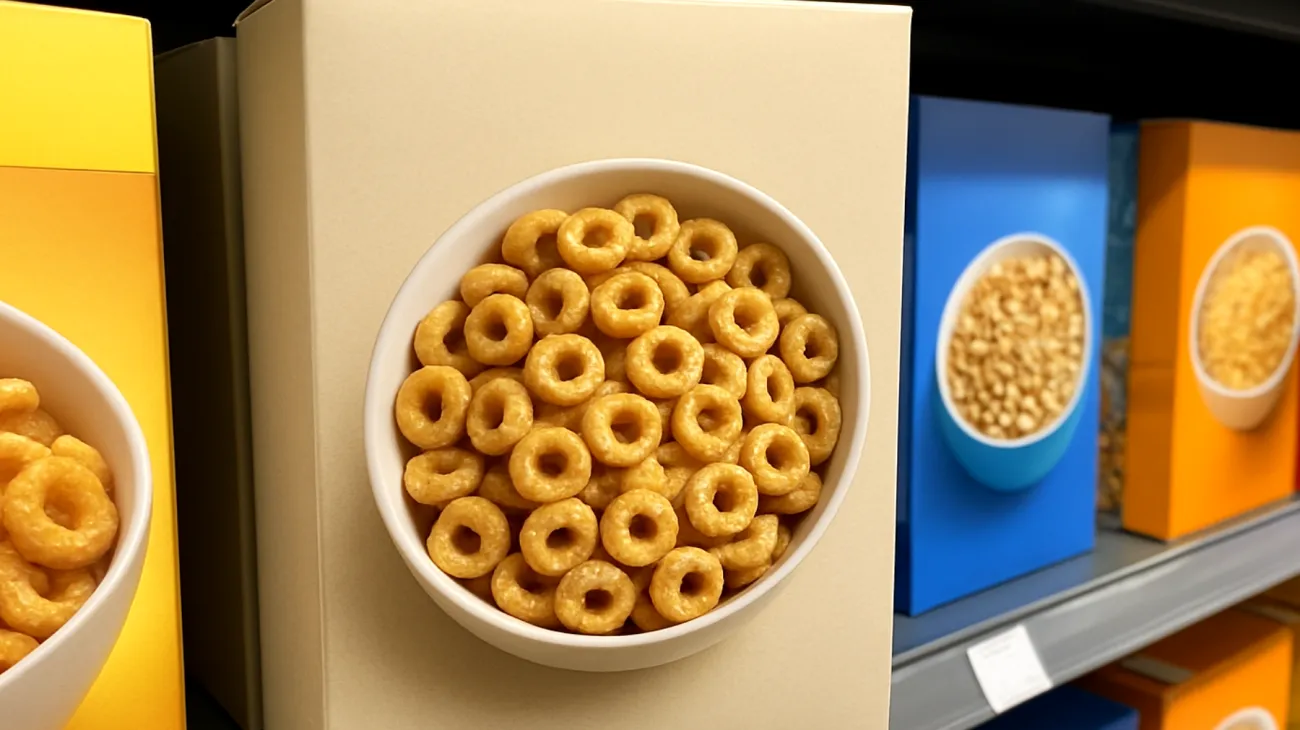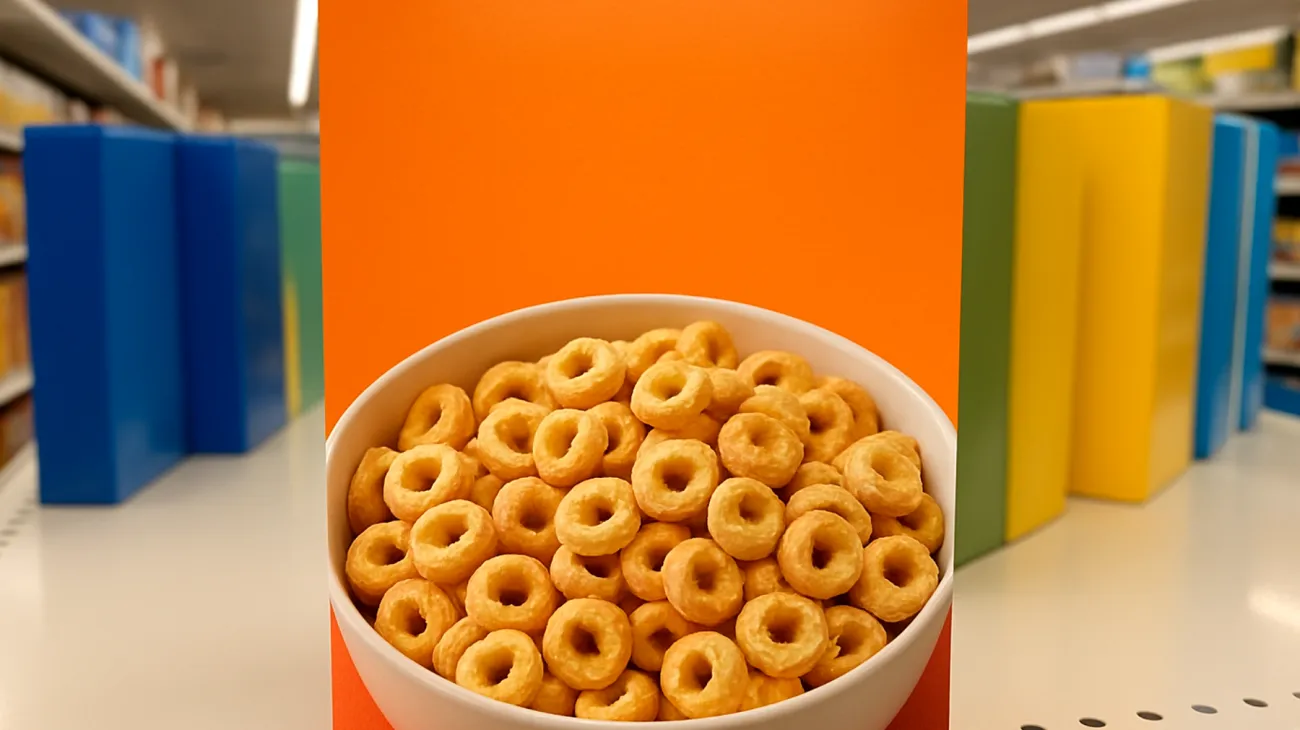Walking down the cereal aisle with your child in tow can feel like navigating a maze of colorful boxes filled with confusing symbols, mysterious labels, and marketing claims that seem designed to perplex rather than inform. As parents in the UAE, we face unique challenges when deciphering these product messages, especially when our children’s health hangs in the balance of our breakfast choices.
The reality is that cereal manufacturers use a complex web of symbols and labeling systems that often prioritize marketing appeal over genuine nutritional transparency. Understanding these coded messages becomes crucial when you consider that children’s sugar intake from breakfast cereal can be significant. Studies have found that children can consume up to 30% of their daily sugar intake from breakfast cereal alone, with research showing children often get an average of 11 grams of sugar at breakfast, making cereal a major contributor to their daily added sugar consumption.
Decoding the Symbol Jungle
Those cheerful cartoon characters on packaging and vibrant colors aren’t accidental design choices—they’re strategic tools designed to influence children’s preferences and parents’ purchase decisions. Research confirms that animated mascots increase the attractiveness of products to children and can significantly impact their choices. But buried within this visual chaos are symbols that actually matter for your child’s wellbeing. The key lies in knowing which ones deserve your attention and which ones are simply marketing smoke screens.
Nutritional traffic light systems, when present, use red, amber, and green indicators to signal high, medium, or low levels of sugar, salt, and saturated fat. However, these systems are voluntary in many regions, including the UAE, and their absence means parents must consult the nutritional panel directly for accurate information.
Certification marks present another layer of complexity. Organic symbols generally require third-party certification with defined criteria, such as those set by the USDA or EU Organic standards. Whole grain stamps verify that a product contains at least 8 grams of whole grains per serving. Heart-health indicators also have defined standards and application requirements. However, less-regulated symbols or claims that rely on self-certification by manufacturers still exist, creating a challenging landscape for parents who simply want to make informed choices.
The Language of Nutritional Claims
Phrases like “naturally flavored,” “enriched with vitamins,” and “made with real fruit” populate cereal boxes like confetti, but their actual meaning often differs dramatically from consumer expectations. “Naturally flavored” means the flavoring compounds are derived from natural sources, but this doesn’t guarantee the absence of artificial additives. The compounds may be processed significantly and can include non-flavor additives that wouldn’t typically be considered natural by consumers.
The term “enriched” frequently appears on cereals, suggesting enhanced nutritional value. However, enrichment refers to the process of adding nutrients that were lost during processing, rather than enhancing the product beyond its original nutritional value. For most breakfast cereals, enrichment typically restores vitamins and minerals lost in the refining process, not exceeding the nutrients found in the whole grain itself.
Sugar content becomes particularly deceptive when manufacturers employ multiple sweetening agents with different names. Corn syrup, dextrose, fructose, and rice syrup all contribute to total sugar content. Listing these separately can make the total sugar content seem less obvious, though nutrition panels are required to report total sugars, making this value essential to check.

Age-Appropriate Nutritional Considerations
Children’s nutritional needs differ significantly from adult requirements, yet many breakfast cereals use adult daily value percentages as their reference point. This creates confusion when evaluating whether a product provides appropriate nutrition for your child’s developmental stage and can mislead parents when assessing if a cereal meets their child’s specific requirements.
Fiber content becomes particularly relevant for children, as adequate intake supports digestive health and helps moderate sugar absorption. General guidance recommends that children consume at least 14 grams of dietary fiber per 1,000 calories, with many experts suggesting 3 grams or more per serving for a cereal. However, some manufacturers boost fiber content using isolated fibers like inulin, which may not deliver the same health benefits as naturally occurring cereal fiber.
Iron fortification appears frequently in children’s cereals, addressing a genuine nutritional need for growing children. However, the form of iron matters—ferrous sulfate is more bioavailable than elemental iron, and excessive iron intake from supplementation may interfere with the absorption of other minerals such as zinc.
Reading Between the Marketing Lines
Package front claims often tell only part of the story. “No artificial colors” might be accurate while the product still contains artificial flavors and preservatives. “Made with whole grains” gives no information about the actual percentage of whole grains included—sometimes it can be as little as a few percent of the total product.
Serving size manipulation represents another area requiring careful attention. Manufacturers sometimes list unrealistically small serving sizes to make sugar, calorie, and other numbers appear lower. Studies have shown that average consumption for children is frequently above the suggested serving, with most children consuming 50-60 grams when a serving might be listed as only 30 grams.
- Check if the serving size matches your child’s actual consumption
- Calculate sugar content as a percentage of total weight, keeping in mind WHO recommendations that less than 10% of total daily energy intake should come from free sugars
- Look for fiber content of at least 3 grams per serving
- Verify that whole grains appear as the first ingredient
Practical Navigation Strategies
Developing a systematic approach to cereal evaluation can transform overwhelming choices into manageable decisions. Start with the ingredient list—items appear in descending order by weight, revealing the main components and whether sugar or whole grains predominate in your child’s breakfast choice.
Focus on ratios rather than absolute numbers. Cereals with higher fiber-to-sugar ratios are linked with better glycemic and satiety profiles. A cereal with 8 grams of sugar and 4 grams of fiber presents a different nutritional profile than one with 12 grams of sugar and 1 gram of fiber, even though both might seem “high sugar” at first glance.
Time invested in understanding these labeling systems pays dividends in your family’s long-term health outcomes. Early taste preferences influence long-term dietary habits, making label literacy a practical life skill for both children and adults. Your children develop taste preferences early, and breakfast choices made today influence their relationship with food for years to come. By mastering the art of label interpretation, you’re not just choosing cereals that are genuinely more nutritious rather than just better marketed—you’re modeling critical thinking skills that will serve your children throughout their lives while helping to lay healthy foundations for their future.
Table of Contents

